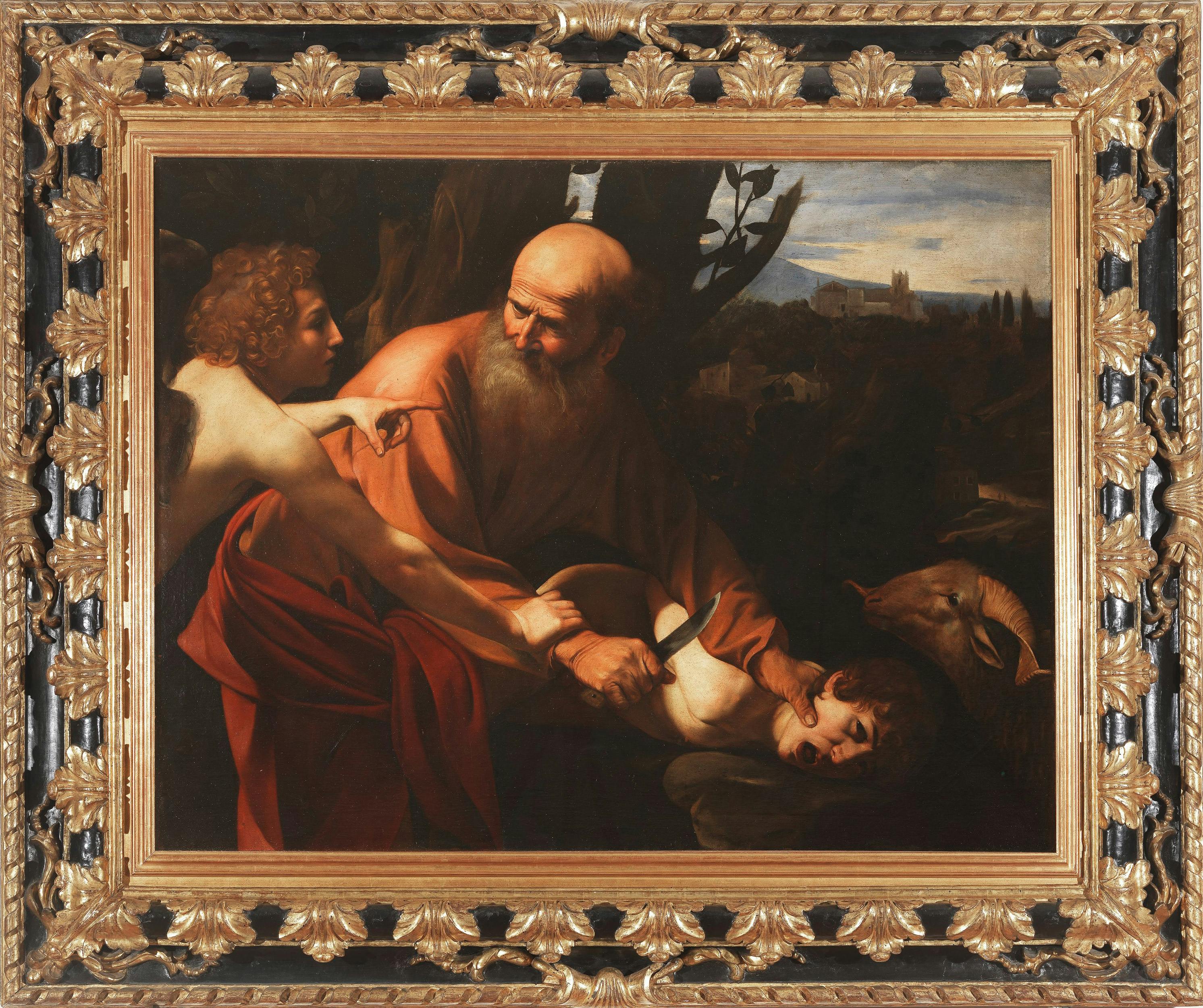Sacrifice of Isaac
Michelangelo Merisi, detto il Caravaggio (Caravaggio, Milano 1571 – Porto Ercole, Grosseto 1610)
The painting illustrates the Old Testament passage in which God subjected Abraham to an extraordinary test of obedience by ordering him to sacrifice his only son Isaac. Caravaggio faithfully depicts the crucial moment of this dramatic story, when the old Abraham, at the very moment he is about to immolate Isaac, is blocked by an angel sent by the Lord. “Do not lay your hand on the boy or do anything to him! For now I know that you fear God, seeing you have not withheld your son, your only son, from me”, says the God's messenger to Abraham (Genesis XXII, v. 12) while pointing with his left hand at a ram to be sacrificed in place of his son. Caravaggio chooses to humanise the figure of the angel by placing it alongside Abraham: a solid presence that grasps the old man's wrist with a strong, tight grip. In the background unfolds a wide, Mediterranean hilly landscape, animated by cottages and a village. The critics recognised in this landscape the stylistic echoes of Caravaggio's training in Lombardy and Veneto. In the past this work was the object of a symbolic interpretation, according to which the building on the hill would be a church with a baptistery, thus a reference to the future birth of the Catholic Church; and the light diffused over the landscape would symbolise the light of divine grace. The sacrifice of the young Isaac would thus foreshadow the sacrifice of Christ. The biblical theme was certainly indicated by the man who committed the work, Maffeo Barberini, who was an influential Vatican Monsignor at the time of the execution of the painting, and would become Pope under the name of Urban VIII. Caravaggio's authorship of this painting, which was recognized by all critics long time ago, is also evidenced by the payments made by Maffeo Barberini to the painter himself.
The painting was donated to the Uffizi in July 1917 by John Fairfax Murray, who purchased it as a work made by Gherardo delle Notti from a company that had acquired part of the property of the Roman Prince’s family of Colonna Sciarra in the late 19th century.
